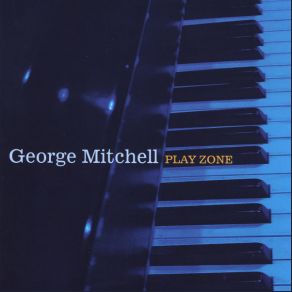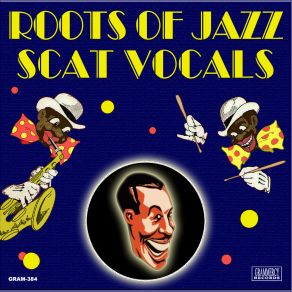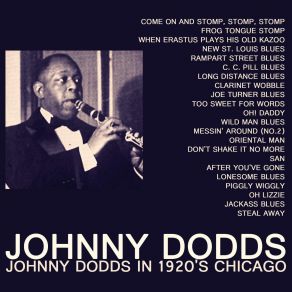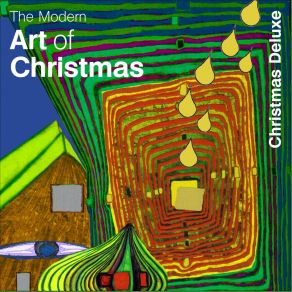George Mitchell
Wikimp3 information about the music of George Mitchell. On our website we have 6 albums and 8 collections of artist George Mitchell. You can find useful information and download songs of this artist. We also know that George Mitchell represents Jazz genres.
Biography
[Edit]When the history of the U.K. album charts is written, there will not be many artists who managed to top the charts with their first three album releases. Although a more common occurrence recently, in the first 50 years there were just nine acts who achieved this feat: the Beatles (of course), Oasis, Coldplay, George Michael, Robbie Williams, the boy bands Boyzone and Blue, Avril Lavigne, and the George Mitchell Minstrels. One might be forgiven for not remembering the latter massively popular group from the 1950s and 1960s, because time has not been kind to their type of then-"wholesome" entertainment, which has all but vanished from the mainstream.
First broadcast on television as a one-off show on the 14th of June 1958 under the musical direction of George Mitchell, a pianist and choral arranger from Falkirk, Scotland, the male George Mitchell Minstrels and the female troupe the Television Toppers were singers and dancers who performed a variety show of light entertainment with traditional American Deep South, music hall, and vaudeville and Broadway show tunes. The only problem was that in the true spirit of the traditional minstrel shows, the men all wore blackface makeup (in reality it was red to show up better on monochrome television) and the program was called The Black and White Minstrel Show. In those more "innocent" times it was incredibly popular, and the one-off show developed into a series that ran for 20 years at prime time on Saturday night. A year previously, George Inns had produced the program's forerunner, The 1957 Television Minstrels, but in 1958 the new program was an immediate hit and a major competitor to The Billy Cotton Band Show as the most watched light entertainment show during the 1950s. As well as the troupe numbers, there were solo performances from singers Tony Mercer, John Boulter, and Dai Francis, linked by comedy routines from Leslie Crowther, Stan Stennett, Don Maclean, and George Chisholm, acting as fillers between the songs and set changes. Long-serving minstrels included Benny Garcia, Les Rawlings, Les Want, and Andy Cole. The Television Toppers included, among others, Margo Henderson, Margaret Savage, Penny Jewkes, and Delia Wicks.
At the end of 1960, the first LP of the show was released. The George Mitchell Minstrels from the Black and White Minstrel Show featured eight tracks, grouped into medleys with 56 songs from the 1890s up to the present time, the medleys titled "Meet the Minstrels" (with "Oh Dem Golden Slippers," "Camp Town Races," and "If You Were the Only Girl in the World"), "Your Requests" (another medley including "You Must Have Been a Beautiful Baby," "Daddy Wouldn't Buy Me a Bow Wow," "Moonlight Bay," "Ma, He's Making Eyes at Me," and "I'm Looking Over a Four-Leaf Clover"), "A Tribute to Al Jolson" (including "Meet the Girls"), and "The Grand Finale" (including "Coal Black Mammy," "Polly Wolly Doodle," and "When the Midnight Choo Choo Leaves for Alabam"). This album hit the charts at the end of November 1960 and, after 36 weeks in the Top Ten, it climbed to the very top at the end of July 1961, remaining there for a total of seven weeks. The second volume, titled The George Mitchell Minstrels from Another Black and White Minstrel Show, reached the number one position considerably faster, released in October and hitting the top by mid-November. It was another series of seven medleys with a total of 49 individual songs similar to the first volume, including another "Meet the Minstrels" medley (including "When the Saints Go Marching In" and "You Made Me Love You"), the "In the Good Old Summertime" medley, a "Western Style" medley, and more of "Your Requests" (including "Singin' in the Rain" and "My Blue Heaven"). In 1961 the television show won the Light Entertainment category at the Golden Rose of Montreux.
At the beginning of December 1962, the third number one LP, On Stage with the George Mitchell Minstrels moved up to the top of the charts, completing the remarkable hat trick and in the final week of the year, the original Black and White Minstrel Show album returned to the top, nearly one and a half years after it first hit number one. On Stage With was recorded in the same format as the previous two LPs, with six medleys of 46 songs, all with linking themes: "The States" medley (including "The Yellow Rose of Texas," "Georgia on My Mind," "Stars Fell on Alabama," and "Carry Me Back to Old Virginny"), another "Your Requests" medley (with "Home on the Range," "Sonny Boy," and "Mocking Bird Hill"), "Down Memory Lane" (including "You Are My Sunshine," "Memories Are Made of This," and "Where or When"), and a "Long Long Ago" medley (with the World War I songs "Meet Me Tonight in Dreamland," "Pack Up Your Troubles," and "Till We Meet Again"). Beginning 1963 with three albums in the charts at numbers one, two, and five was the high point for the Black and White Minstrels, for although they would continue to release one album per year at Christmastime throughout the 1960s, the music industry and particularly the album charts would be changed forever in 1963 with the arrival of the Beatles.
The premise of the show was a depiction of the American Deep South in which coy white women would be wooed by happy, smiling black slaves, taking a break from plantation work to sing and dance. It was visually striking and deemed highly entertaining at a time when television was more often than not seen as drab and colorless. When the BBC introduced color TV in 1967, it was one of the first shows to benefit from this innovation, and that made the contrast between the black and white faces appear even greater to audiences at the time. However, storm clouds were gathering, as many people in the mid-'60s were becoming more aware of the civil rights movement, and The Black and White Minstrel Show was seen by some to caricature black people and depict them as being unsophisticated and no more educated or with no more aspirations than the slaves of the Deep South. Public debate went on despite the show's continuing popularity, and when a petition was lodged against the program by the Campaign Against Racial Discrimination demanding that it be taken off the air, the producers George Inns and George Mitchell could hardly believe it. They had never thought of the racist angle of the show, which had a century of tradition behind it. However, this was nearly the only show on television that even portrayed black people, and the depictions weren't even remotely realistic.
When color television was introduced in 1967, things proceeded from bad to worse. A "whiteface" version titled Masquerade was attempted in the late '60s, using masks instead of black faces, which only further inflamed the critics, who claimed that blacks were still not depicted as real, having now been replaced by singers wearing masks. When this program failed to draw anything like the projected audience-viewing figures, they reverted to the traditional blackface minstrel format, but TV light entertainment was dying anyway, and in the mid- to late '70s, the musical landscape had changed beyond all recognition. Even beyond the issue of racial insensitivity, it was no longer enough to expect entire families to sit down on a Saturday night and watch song and dance troupes performing hits from 100 years ago, and on July 1, 1978, the show was finally axed, continuing to live on as a live stage show, touring the U.K. until the late '80s. Further demonstrating how far from grace the idea of the Black and White Minstrels had fallen, EMI released the album 30 Golden Greats at Christmas 1977 on their EMTV series of albums specifically aimed at a mass market via TV advertising. The first six albums in the series had all hit number one, but the George Mitchell Minstrels, although reaching number ten, fell far short of the label's expectations. That such an innocently intentioned show could become a total pariah in just 20 years is one of the most extraordinary episodes in television and record chart history.
Title: Natural Obsession (Natural Obsession)
Artist: George Mitchell
Genre: Dancefloor, Pop, Dance Pop
Title: A Tad Bazaar (Sic) [Original Soundtrack] - EP
Artist: Tony Tisdale, George Mitchell
Genre: Theatre/Soundtrack
Collections
Title: Xmas Inspiration: Merry Christmas Greetings
Genre:
Title: The Best Christmas Album
Genre: Traditional Pop Music
Title: Roots Of Jazz Scat Vocals (Digitally Remastered)
Genre: Jazz
Title: Johnny Dodds in 1920's Chicago
Genre: Jazz
Title: Xmas Inspiration: Happy Holiday Time
Genre:
Title: Modern Art of Christmas - Christmas Deluxe
Genre:
Title: Modern Art of Christmas - Christmas Deluxe
Genre:
Title: Happy Holiday
Genre: Traditional Pop Music















